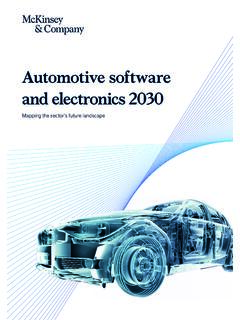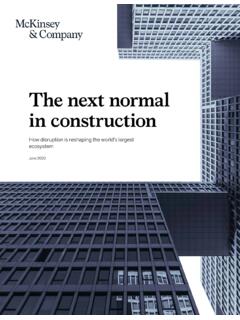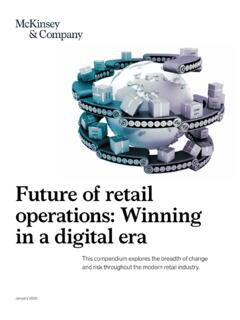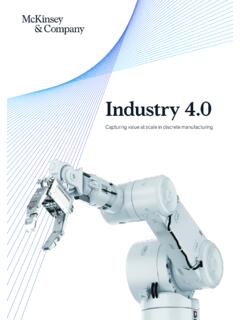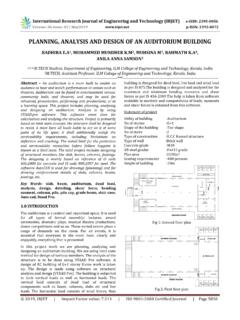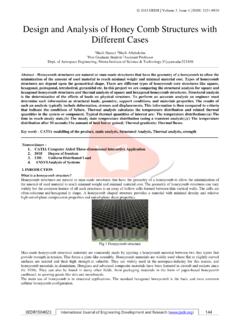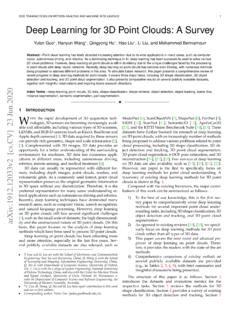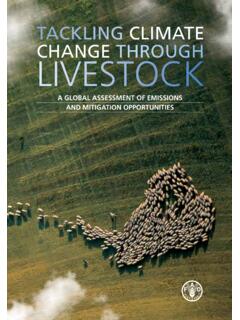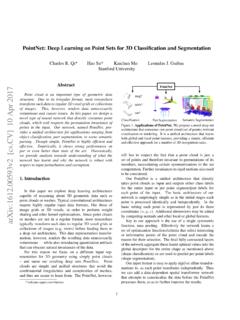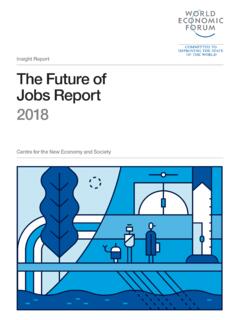Transcription of Next generation supply chain: Supply chain 2020
1 Supply chain 2020 Next generation Supply chain : Supply chain 2020 July 2013 Copyright 2013, by McKinsey & Company, generation Supply chain : Supply chain 2020 Knut AlickeBalaji Iyer23 Next generation Supply chainSupply chain 2020 ContentsAcknowledgements 5 Introduction 71. Key trends shaping Supply chains 92. Implications for the next generation Supply chain 1545 Next generation Supply chainSupply chain 2020 Acknowledgements We would like to thank Sumit Dutta, a partner in our Mumbai office, and Muthiah Venkateswaran, an associate partner in our Chennai office, for their contributions to this would like to thank Insa Mareen Wente, a consultant based in our Hamburg office; Kerstin Kubik, a knowledge expert based in our Vienna office; and Markus Leopoldseder, a director of knowledge ( Supply chain management) based in our Vienna office, for their would also like to thank Vineeta Rai for the editorial support.
2 Kulsum Merchant for the support in external relations; J Sathya Kumar and Nipun Gosain for their visual aids whitepaper is not based on any primary research that we conducted; it synthesises our perspectives gained from past research and experience in serving multiple stakeholders of Supply chains over many years. For the experience and perspectives, we acknowledge our Supply chain practice without whose efforts this whitepaper could not have been , we would like to thank the Confederation of Indian Industry (CII) and CII Institute of Logistics for the opportunity and the forum to provide our perspective on Supply chain work is independent and has not been commissioned or sponsored in any way by any business, government or other institution.
3 Knut Alicke Master Expert, McKinsey & CompanyBalaji Iyer Engagement Manager, McKinsey & Company67 Next generation Supply chainSupply chain 2020 IntroductionThe Supply chain will be a key element to shape the future of businesses. Many corporates have long demonstrated that Supply chain management is a tool for competitive advantage. It will evolve as a top priority for CEOs across organisations over the next few years. Due to the difficulty in managing short-term growth and profitability, companies will tend to focus on extreme cost controls. It is equally important to plan the future and Supply chain will be a key element in shaping the future of businesses.
4 As companies look for ways to compete in such volatile environments, they will need to master Supply chain evolution and make it a distinctive competitive advantage. McKinsey & Company s whitepaper, Next generation Supply chain : Supply chain 2020, provides a perspective on the key trends that will drive the next generation Supply chain , and describes their potential key trends will drive the next generation Supply chain : innovations in businesses; uncertainties together with shorter and tougher business cycles; expanding and demanding consumer base; converging wages and increasing costs; and the evolution of big data.
5 Each of these will have a significant bearing on the way today s Supply chains operate, and will drive the next generation Supply key implications of the trends are: evolution of a smart, segmented and customer-centric Supply chain ; transformation to an agile, robust and sustainable Supply chain ; emergence of Supply chain as a Service (SCaaS); and development of relevant and capable Supply must evolve continuously to stay at the top. For companies to gain a competitive edge, the Supply chain leaders will have to factor in these trends and their potential implications on the business. They will have to develop their Supply chain strategy by taking into account the design of future logistics networks, improving the responsiveness of the Supply chain , and working towards Supply chain operational hope this whitepaper will contribute to the on-going organisational discussions on their preparedness to face the future and build the next generation Supply generation Supply chainSupply chain 20201.
6 Key trends shaping Supply chainsCompanies evolve over time with changing business dynamics; in parallel, they lead to Supply chain evolutions. Supply chain management will remain a key source of competitive advantage and it is critical to master its evolution. Companies will need to understand the underlying trends that shape Supply chains and develop the next generation Supply chain . FIVE KEY TRENDS SHAPE THE Supply CHAINW ithin a continuously changing environment, multiple trends influence the way businesses operate. This whitepaper aims to bring to the fore five key trends that will deeply impact the way Supply chains trends are: innovations in businesses; shorter and tougher business cycles; expanding and demanding consumer base; converging wages and increasing costs; and the evolution of big data.
7 Each will have a major impact on the way today s Supply chains operate, and will drive the next generation Supply in businesses will have far-reaching implications on the Supply chains of the future. A quick look at the past highlights the fact that innovations fundamentally change the way a Supply chain operates in transport such as the container, in handling such as bar codes and robots, in daily Supply chain management with IT systems. The future will have to evolve with new innovations. Potential innovations that can drive changes to the Supply chain are highlighted in Exhibit 1 Nine potential economically disruptive technologiesSOURCE.
8 McKinsey Global Institute analysis3D printingAdditive manufacturing techniques to create objects by printing layers of material based on digital modelsAdvanced materialsMaterials designed to have superior characteristics ( , strength, weight, conductivity) or functionalityAdvanced oil and gas exploration and recoveryExploration and recovery techniques that make extraction of unconventional oil and gas economicalAutonomous and near-autonomous vehiclesVehicles that can navigate and operate with reduced or no human interventionCloud technologyUse of computer hardware and software resources delivered over a network or the Internet, often as a serviceThe Internet of ThingsNetworks of low-cost sensors and actuators for data collection, monitoring, decision making.
9 And process optimisationAutomation of knowledge workIntelligent software systems that can perform knowledge tasks involving unstructured commands and subtle judgementsMobile InternetIncreasingly inexpensive and capable mobile computing devices and Internet connectivityAdvanced roboticsIncreasingly capable robots with enhanced senses, dexterity, and intelligence used to automate tasks or augment humans10 The impact of these innovations on Supply chains will vary across industries, but will be significant across all of them. It is important for businesses to map the impact of these innovations on their Supply chains as they plan their , shorter and tougher business cycles are here to stay.
10 Volatility in business/with partners has always remained a challenge. Business risks driven by uncertainties in the value chain , non-economic factors, macro-regulatory environment and global interconnections have increased in frequency and intensity (Exhibit 2). This has expanded the boundaries of global Supply chains search for the right partners and customers. Experts suggest that, in the future, economic cycles that were witnessed once in 10 to 15 years could be witnessed once in 5 years. Recent history brings such a reality closer home; the world experienced one major crisis approximately every 5 years the Asian banking crisis in the late 1990s, the dotcom bust in the early 2000s, the sub-prime crisis in the late 2000s.





